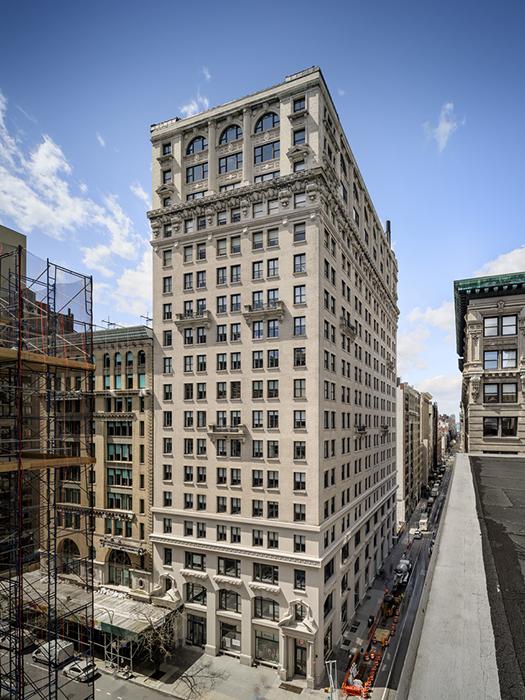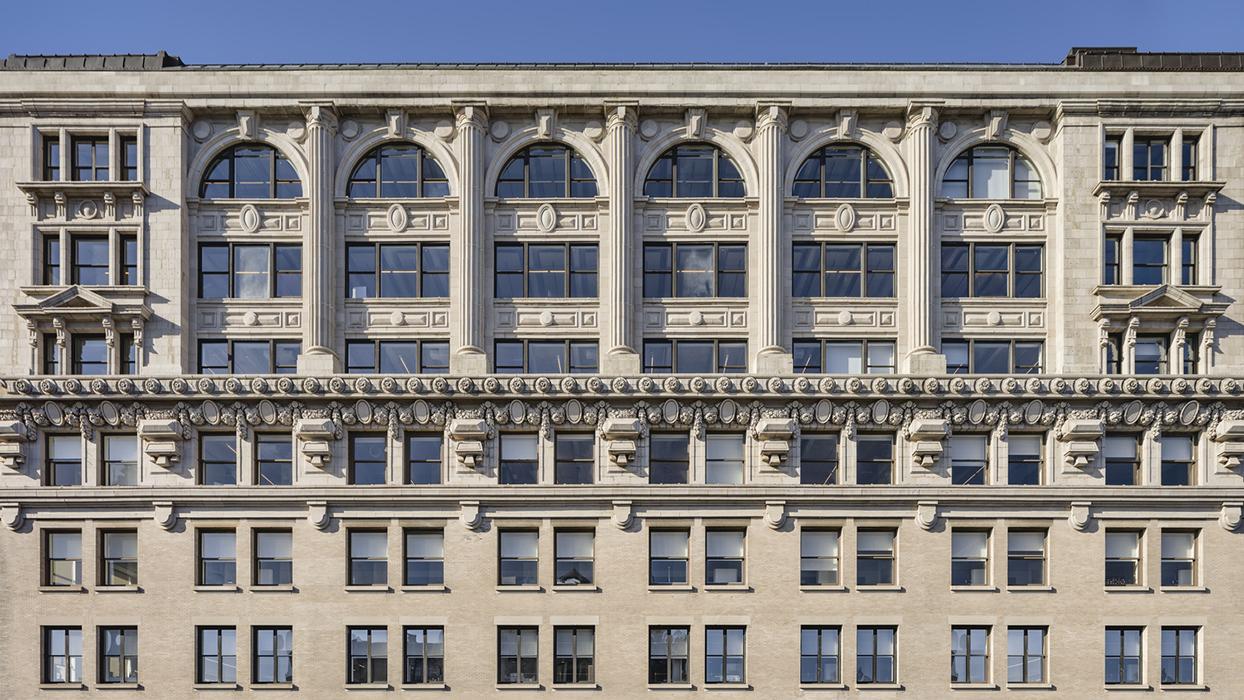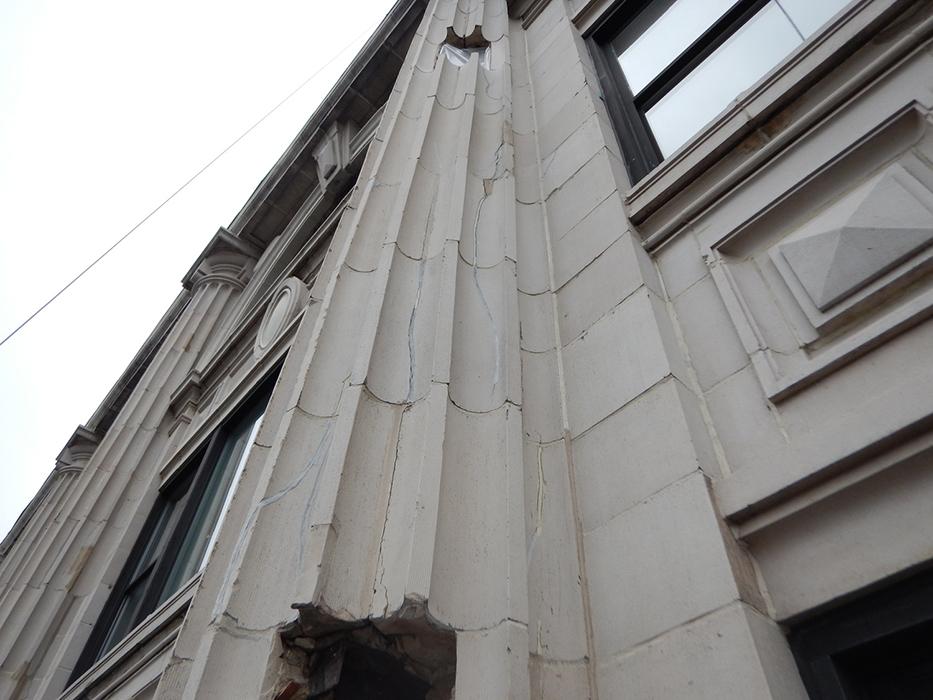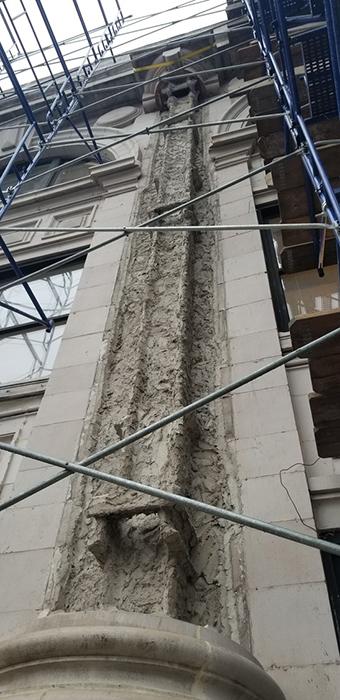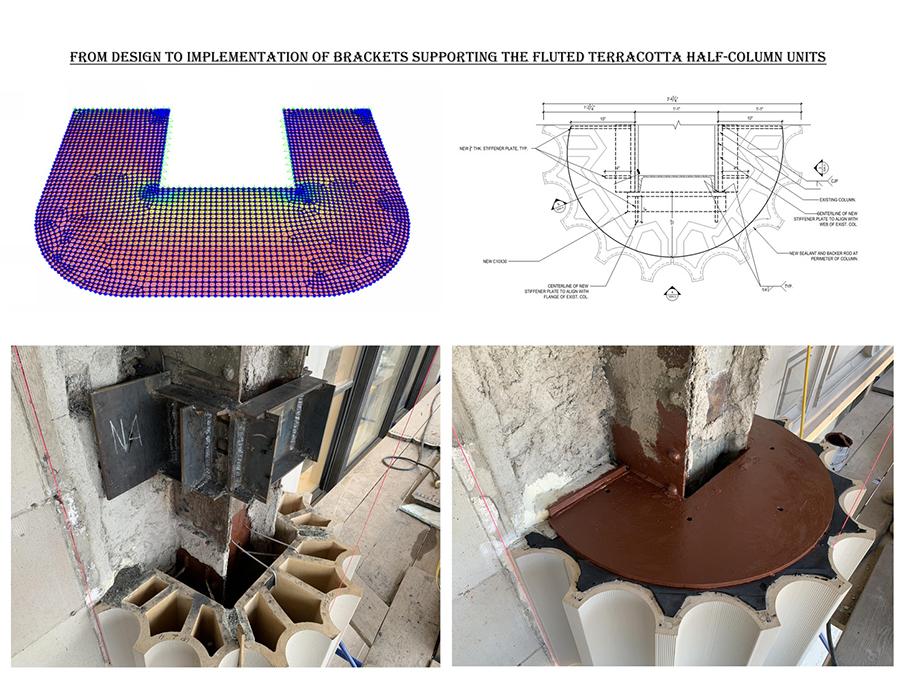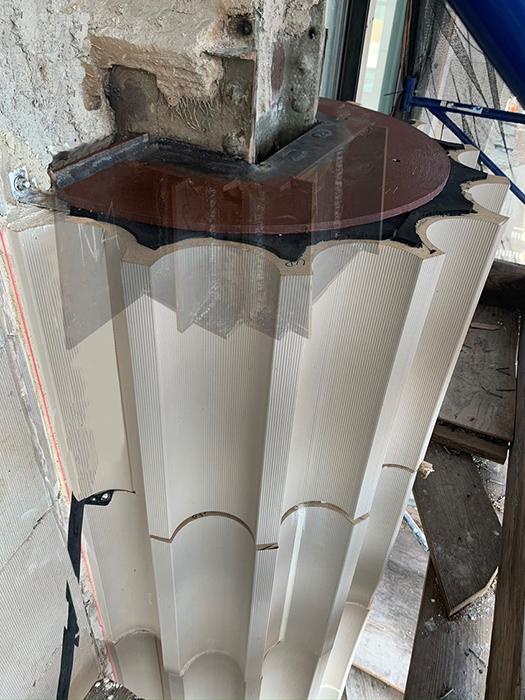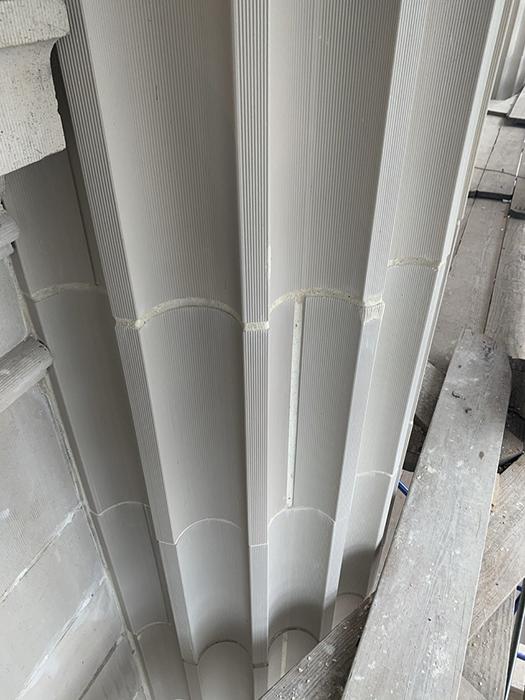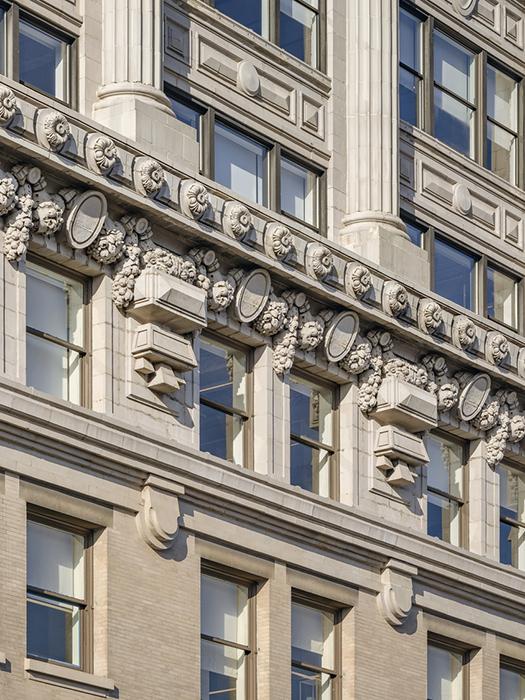
Merchant’s Exchange Building Façade Restoration
A façade assessment of a 1909 building with terracotta ornamentation revealed unsafe conditions, necessitating a creative approach for structural stabilization and restoration.
overview
The 18-story Merchants’ Exchange Building at 114 Fifth Avenue was designed by Maynicke & Franke in 1909. Its façades comprise brick, limestone and granite masonry, and the top three stories feature matte glazed terracotta ornamentation including fluted half-columns.
We were engaged by building owner L&L Holding Company to perform a facade assessment in accordance with NYC FISP when we discovered significantly deteriorated terracotta half-column units that posed an immediate danger to the public. The columns lacked load-relieving bracket supports at the side periphery resulting in full-height vertical shear cracks. We developed a creative approach for temporary protection, structural stabilization and a unique solution to remove and restore these massive historic elements, breathing new life into structure via ingenuity and technology.
highlights
- The severity of the cracked and unstable fluted terracotta half-column units made a full in-kind replacement necessary before removal of the deteriorated terra cotta; the most damaged units were temporarily protected using a high-tensile strength anti-shatter coating.
- The column capitals were pinned and stabilized using customized grout-socked Cintec anchors and temporarily shored with cantilevered steel framing hung from the roof prior to the removal of unsafe terracotta column cladding units.
- After removal of terracotta column cladding units, a lathed trowel-applied weather-resistant fireproofing was applied to the exposed steel column units to maintains water tightness and fire protection.
- The new cladding support design provided three new levels of plate brackets, without the back-up brick masonry, greatly reducing the overall weight while providing proper bearing. The new units were fabricated with vertical open cells and holes in the relieving bracket plates to allow trapped moisture to drain, preventing future problems from freeze-thaw cycles.
- The terracotta units were laterally supported with shop-fabricated stainless-steel anchors welded to the carbon steel column using an appropriate electrode to avoid causing galvanic corrosion. At the contact points of the lateral anchors with the terracotta units, custom fabricated neoprene pads and sleeve jackets mitigate localized stress on the terracotta units.
- The project successfully navigated the technical and logistical challenges of restoring large-scale terracotta columns while meeting the requirements of local government agencies.










